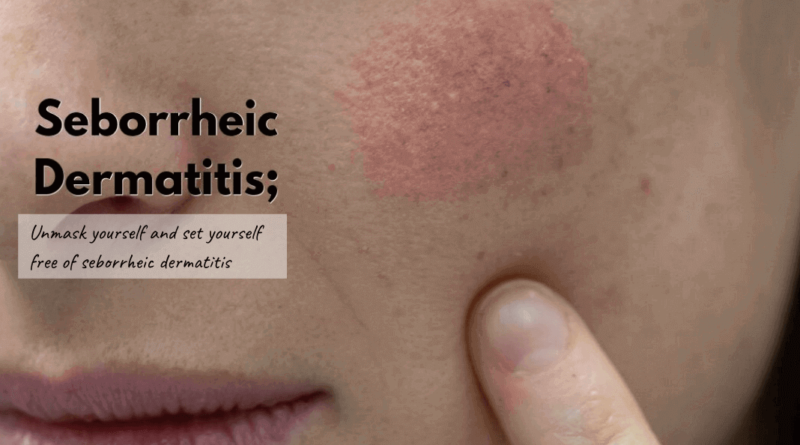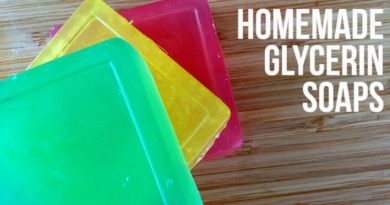Remedial Measures and Tips on How to Treat Seborrheic Dermatitis Naturally
Seborrheic Dermatitis is a chronic inflammatory skin condition that remains confined to the sebaceous gland which comprises of the rich skin of the head, trunk, and sometimes, the intertriginous areas, causing red scaly patches.
An oily secretion into the hair follicles on the affected areas is observed in a person suffering from Seborrheic Dermatitis. It appears quite like psoriasis, eczema or an allergic reaction.
The patches may even be visible on the face and the upper part of the body. According to a report from the medical journal American Family Physician, Seborrheic Dermatitis is prevalent in 1 to 3 per cent of the population.
Table of Contents
Did You Know?
| Seborrheic Dermatitis occurs in infancy ( 2-12 weeks of age) or in the middle-aged and elderly. |
- Home Remedies
- Essential Oils
- Foods
Symptoms
The symptoms of Seborrheic Dermatitis(1) in infants is scaly patches on the baby’s scalp, which may be greasy or crusty. In adults, however, the symptoms vary, and they worsen during dry and cold weather conditions, or if someone is stressed.
Some of the prominent symptoms are flaking skin on the scalp, beard, mustache, called dandruff, greasy skin patches on the armpits, ears, chest, nose, eyelids, face and under the breasts, and red, inflamed and itchy skin conditions.
Causes
Although the exact reason or cause of Seborrheic Dermatitis still stands a mystery, having certain medical conditions can raise the risk of having SD like Parkinson’s disease, heart attack, and AIDS. Apart from these, there are some other conditions that may increase the risks of having SD.
These are excessive intake of alcohol, chronic acne, depression, psoriasis, and even eating disorders. Moreover, people suffering from SD tend to have excessive yeast in the affected areas.
Did You Know?
| Seborrheic Dermatitis, in most cases, is a lifetime issue that keeps clearing and flaring from time to time. |
CURE 1: Home Remedies for Seborrheic Dermatitis
The following points would give you a comprehensive idea of how to get rid of Seborrheic Dermatitis with certain home remedies.
1. Fish Oil
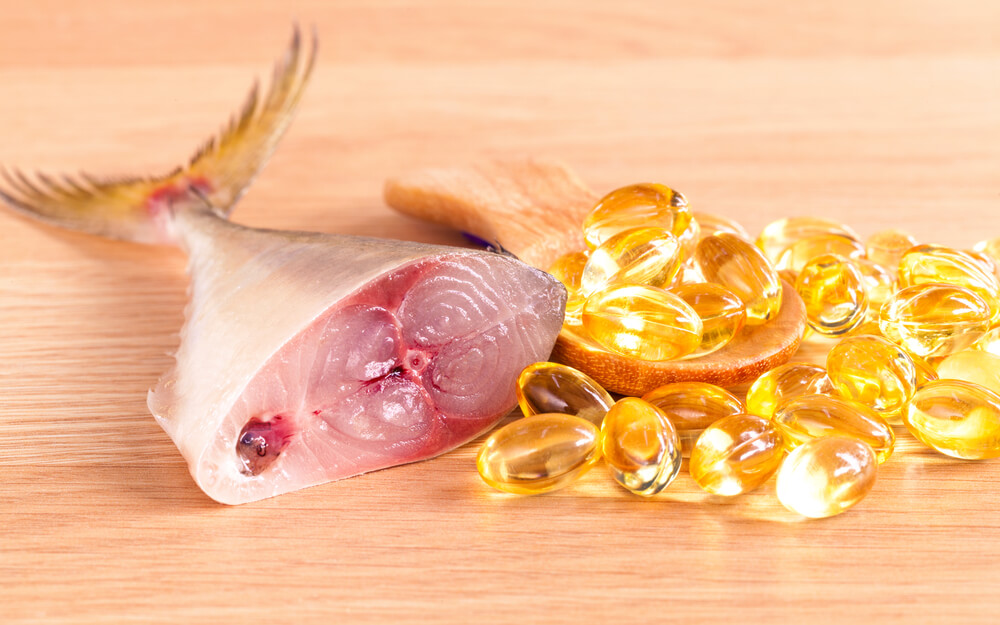
Why Does It Help?
Fish oil has anti-inflammatory qualities due to the presence of Omega3 fatty acids in it. It has been proven that taking fish oil supplements reduce skin symptoms of many inflammatory skin conditions.
How to Use and How Much to Use?
Fish oil is safe if it is taken as directed and instructed by the doctor. Having fish oil supplements can increase the content of Omega3 in the milk of breastfeeding mothers. Also, in the case of babies under the age of one, one should always consult a doctor before giving these supplements to the baby.
2. Aloe Vera
Why Does It Work?
Aloe Vera(2) has anti-inflammatory properties, which are highly effective in treating Seborrheic Dermatitis. Taking aloe vera supplements can lessen the outburst of this skin infection and even reduce its severity.
How to Use and How Much to Use?
Aloe Vera supplements should not be given to children without consulting their physician. Even adults should check for safety and dosage before starting to take them.
Using aloe vera topically can also help in managing redness and itchiness during a flare-up of SD. However, an allergy test should be done on a dime-sized healthy skin spot with a small amount of aloe vera to test if your skin is allergic to it or not.
3. Apple Cider Vinegar for Seborrheic Dermatitis
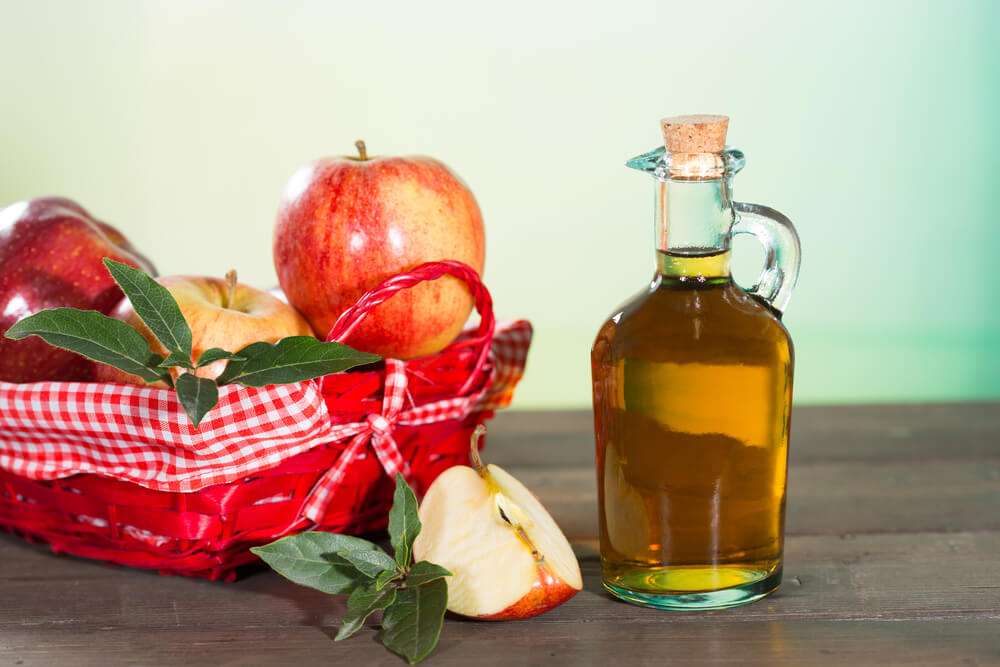
Why Does It Help?
Apple Cider Vinegar has anti-inflammatory properties and hence helps in reducing the infection in the infected areas during a flare-up of SD.
How to Use and How Much to Use?
Apple Cider Vinegar should be applied locally to the affected area, head or body, and should be left for sometime before rinsing it off.
This procedure can be repeated twice in a week.
CURE 2: Essential Oils for Seborrheic Dermatitis
There are certain essential oils that can work miraculously in treating and preventing Seborrheic Dermatitis.
1. Tea Tree Oil for Seborrheic Dermatitis
Why Does It Work?
Tea tree oil has antibacterial, antifungal and anti-inflammatory properties which work as a treatment for Seborrheic Dermatitis.
How to Use and How Much to Use?
Tea tree oil should be used Topically by diluting it with a carrier oil like coconut or olive oil. Before applying to the affected areas of SD, 3-5 drops of tea tree oil should be mixed with one ounce of carrier oil before applying. This would help the healing of scaly skin patches and even provide relief from itchiness.
Also Read: Amazing Benefits and Uses of Tea Tree Oil
2. Evening Primrose Oil
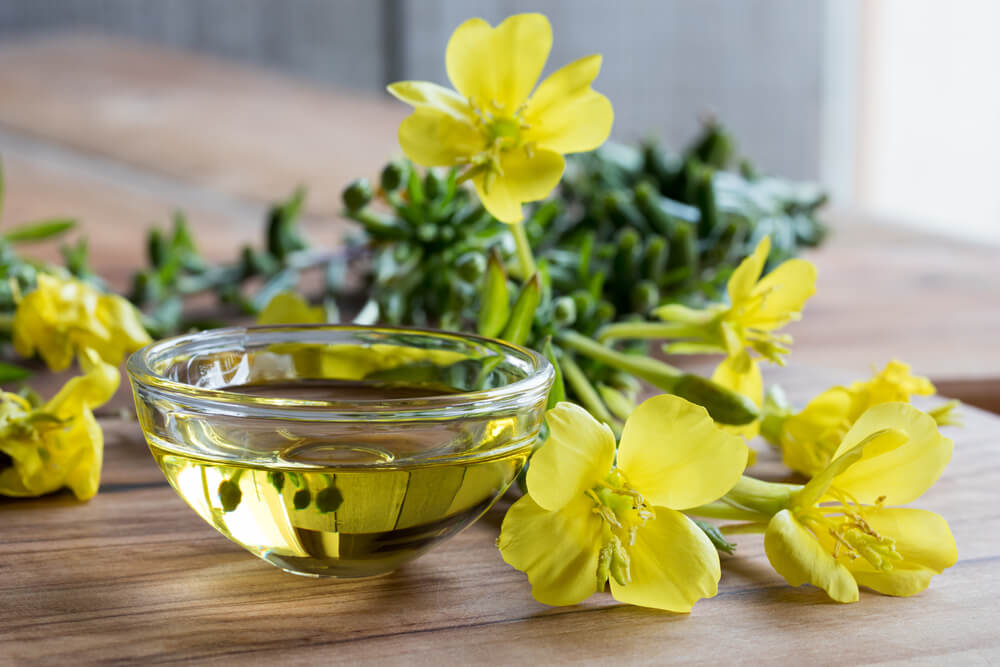
Why Does It Work?
Evening primrose oil(3) contains Omega 6 fatty acids which help improve overall skin health. It is a great source to help heal redness, itching, hot flashes and even inflammation caused during SD.
How to Use and How Much to Use?
Mix 3-5 drops of Evening Primrose oil to dilute with a carrier oil and apply it on the scalp and other infected areas to reduce redness and itchiness caused due to Seborrheic Dermatitis.
This application can be made twice every week.
3. Borage oil
Why Does It Work?
Borage oil contains Gamma-linolenic acid (GLA) that reduces inflammation and keeps hair and skin healthy and moisturized.
How to Use and How Much to Use?
5-7 grams of Borage oil can be applied to the scalp and other affected areas every day on a regular basis for 12 to 24 weeks in order to provide relief from SD.
Did You Know?
| Seborrheic Dermatitis and dandruff are of a continuous spectrum of the same disease and have similar effects and remedies. |
CURE 3: Foods
How to treat Seborrheic Dermatitis by introducing certain food items in your daily regime, let’s find out here.
1. Probiotics for Seborrheic Dermatitis

Why Does It Help?
One of the major reasons for SD to a flare-up in adults is a weak immune system. Probiotics(4) have the properties to strengthen the immunity of a person and decreases inflammatory responses throughout the body.
How to Use and How Much to Use?
Yoghurt or oral probiotic supplements are a complete no-no for infants below the age of one. However, adults can have a bowl of curd along with their meals during lunch or
dinner or have a small bottle of probiotic supplements (65ml), like Yakult, everyday, anytime during the day, to suffice the quota of probiotic requirement in their body in order to fight against bad bacteria present within within them.
2. Fruits and Green Leafy Vegetables
Why Does It Help?
Fruits and vegetables that are rich in antioxidants should be eaten on a daily basis by patients suffering from Seborrheic Dermatitis as this helps reduce inflammation of the skin and even relieves redness and itching. Examples of such foods are spinach, watercress, pumpkin, carrots, Brussel sprouts, bananas, apples, plums, mangoes, cucumbers, grapes, lettuce, celery, and so on.
How to Use and How Much to Use?
Have a bowl full of green vegetables during lunch and dinner every day to prevent a flare-up of SD. Fruits rich in antioxidants should also be eaten before or after meals every day.
3. Olive Oil

Why Does It Help?
Olive oil contains linoleic acid and Omega-3, which hydrates and protects the skin and even reduces skin irritation, inflammation and redness caused during SD outbursts.
How to Use and How Much to Use?
Food cooked in Olive oil can be consumed every day, but the best way to use Olive oil to control SD is to topically use it by coating the scalp with it and leaving it for an hour. Then you can use a brush for removing the scales from the scalp. After that, you can use a mild shampoo and wash off as usual.
Did You Know?
| Controlling risk factors and practising good skin care can reduce the severity of SD. |
Prevention
These preventive measures and self-care tips can help you control Seborrheic Dermatitis to quite an extent.
- Wash your hair on a regular basis, at least three times a week
- Ensure softening and removing scales from your hair
- Always use a medicated and clinically approved cream
- Avoid using products for styling and make-up, especially those who are laden with chemicals
- Stay away from hair and skin products which contain alcohol
- Always wear pure cotton, smooth textured clothes
- Remove certain food items from your diet like tomatoes, citrus fruits, dairy products, eggs, soy and certain spices like cloves, cinnamon, etc.
When to Consult a Doctor or Seek Professional Advice?
Seborrheic Dermatitis is generally a lifelong issue that keeps flaring up and receding on its own over time and again. However, with proper skincare and certain lifestyle alterations, one can keep this disease controlled and at bay. The most common over-the-counter remedies of treating SD is topical treatment with natural remedies like aloe vera, using antibacterial gels, medicated shampoos, and sulfur products, which are readily available.
If you are undergoing or following anything more than just medicated shampoos to deal with the problem, you should always consult your pediatrician or doctor for advice.
Moreover, if your infection does not get better by using these medicated products and if the area turns painful, swollen, red and pus starts draining out from there, you should seek professional medical advice at once.
Did You Know?
| During a Seborrheic Dermatitis flare-up, getting plenty of sunlight can stop the growth of yeast, which causes inflammation of the skin. |
The best remedies for Seborrheic flare-up are Topical medicines like creams, foams, gels, lotions and ointments containing hydrocortisone or corticosteroids. However, long term usage of these can cause skin thinning.
Hence, they are advised only for short term usage. In order to reduce the side effects of these topical medicines, it is recommended to introduce some natural treatments alongside.
Where antibacterial gels are generally prescribed for SD on the scalp, antifungal shampoos and shampoos also do the needful in curbing itchiness and outburst. Light therapy, involving exposure of the infected areas to ultraviolet rays, is also highly beneficial and is used in severe cases of SD.
Last, but not least, the best results are seen to show up when a combination of both medication and lifestyle is adapted to control and treat Seborrheic Dermatitis.
Did You Know?
| Seborrheic Dermatitis is as common as acne. |
Also Read: What Are The Common Causes of Skin Allergies?
FAQs
1. Is There a Cure for Seborrheic Dermatitis?
Ans: To be honest, Seborrheic Dermatitis can never get cured completely. However, proper treatment, along with skincare regimes, can prevent it from spreading and even treat its outburst to quite an extent. It can help loosen and clear scales, prevent skin infection and even reduce itchiness and swelling drastically. In infants, however, SD, known as cradle cap, may disappear completely over time even without any treatment.
2. Is Seborrheic Dermatitis Contagious?
Ans: Seborrheic Dermatitis mainly attacks people with oily skin, which is unsightly, itchy and even embarrassing at times, especially when it is on the face. But it is not contagious. Scales get formed on the reddened skin of the patient,
which may even spread to the other parts of his body, but it can never spread from one person to another.
3. What Causes Seborrheic Dermatitis from Flaring Up?
Ans: Seborrheic Dermatitis can keep erupting and subsiding on its own in adults. The condition worsens, or flare-ups occur when the weather turns dry and cold. Stress, too, is a major reason for the flare-up to trigger.

